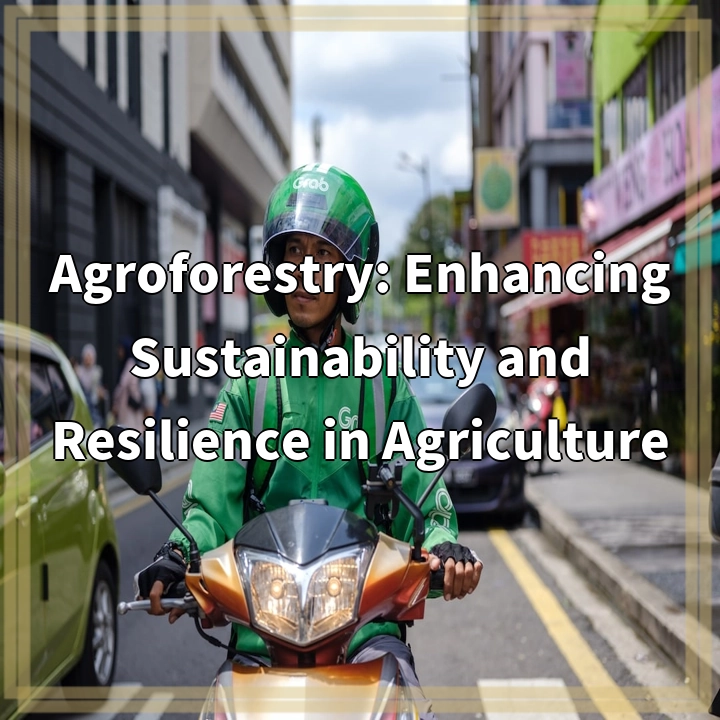
What is Agroforestry?
Agroforestry is a land management practice that involves the cultivation of trees alongside agricultural crops and/or livestock grazing. It is a sustainable and integrated approach that combines the benefits of trees and agriculture to create resilient and productive landscapes.
Real-World Problems Associated with Agroforestry
While agroforestry offers many benefits, there are also some challenges and real-world problems that need to be addressed. Understanding and finding solutions to these issues is crucial for the successful implementation of agroforestry practices.
1. Land Constraints:
One of the significant challenges faced in agroforestry is finding adequate land for implementation. In many regions, there is a scarcity of available land, making it difficult for farmers to allocate space for tree planting alongside their crops or livestock.
2. Lack of Awareness and Knowledge:
Agroforestry is still a relatively new concept in many regions, and there is a lack of awareness and knowledge among farmers and agricultural practitioners. This can hinder the adoption and success of agroforestry practices, as farmers may be hesitant to try something unfamiliar.
3. Market Access and Financial Incentives:
For agroforestry to be economically viable, farmers need access to markets that value agroforestry products and provide fair prices. Additionally, financial incentives such as grants or subsidies can encourage farmers to invest in agroforestry, but the availability and accessibility of such incentives vary across regions.
4. Maintenance and Long-Term Management:
Establishing and maintaining agroforestry systems require ongoing efforts and management. This includes pruning, weeding, and protecting young trees from pests or diseases. Lack of knowledge and resources for regular maintenance can impede the success of agroforestry systems.
5. Policy and Legal Barriers:
Existing policies and regulations may not always support or incentivize agroforestry practices. In some cases, there may be legal barriers to planting trees or restrictions on certain tree species. Addressing these policy and legal challenges is essential to promote the adoption of agroforestry.
6. Climate Change and Adaptation:
Climate change poses unique challenges for agroforestry systems. Changes in temperature, rainfall patterns, and extreme weather events can impact tree growth, crop productivity, and livestock health. Developing resilient agroforestry systems that can adapt to changing climatic conditions is crucial.
7. Social and Cultural Context:
Agroforestry practices need to consider the social and cultural context of the communities where they are implemented. Understanding local customs, traditions, and practices can help ensure that agroforestry systems are accepted and supported by the community.
Addressing these real-world problems associated with agroforestry requires collaboration among policymakers, researchers, farmers, and local communities. Finding solutions to these challenges will help unlock the full potential of agroforestry in enhancing sustainability and resilience in agriculture.

Potential Solutions for Agroforestry Challenges
1. Land Constraints:
Efforts can be made to optimize land use through practices like intercropping and agroforestry zoning. This involves strategically designing and planning agroforestry systems to maximize tree-crop compatibility and improve overall land productivity.
2. Awareness and Knowledge:
Education and extension programs can be implemented to build awareness and provide training on agroforestry practices. This can include workshops, field demonstrations, and knowledge-sharing platforms to empower farmers and promote the adoption of agroforestry.
3. Market Access and Financial Incentives:
Efforts should be made to develop market opportunities for agroforestry products, including establishing fair trade networks and promoting agroforestry certification. Governments can also provide financial incentives such as tax benefits or subsidies to support farmers in adopting and maintaining agroforestry systems.
4. Maintenance and Long-Term Management:
Training and capacity-building programs can be implemented to equip farmers with the necessary skills and knowledge to effectively manage agroforestry systems. This can include techniques for tree pruning, pest and disease management, and soil fertility management.
5. Policy and Legal Barriers:
Advocacy efforts can be undertaken to influence policy and regulatory frameworks to support and incentivize agroforestry. This can involve engaging with policymakers, showcasing successful case studies, and highlighting the environmental and socio-economic benefits of agroforestry.
6. Climate Change and Adaptation:
Research and development can focus on identifying and promoting tree and crop species that are resilient to climate change. This can involve breeding programs, seed banks, and dissemination of climate-smart agroforestry practices that enhance adaptation and mitigation capabilities.
7. Social and Cultural Context:
Engagement with local communities and stakeholders is crucial in the design and implementation of agroforestry systems. Understanding and respecting social and cultural contexts can help ensure the acceptance and long-term success of agroforestry practices.
By implementing these potential solutions, we can overcome the challenges associated with agroforestry and unlock its full potential for enhancing sustainability and resilience in agriculture.















